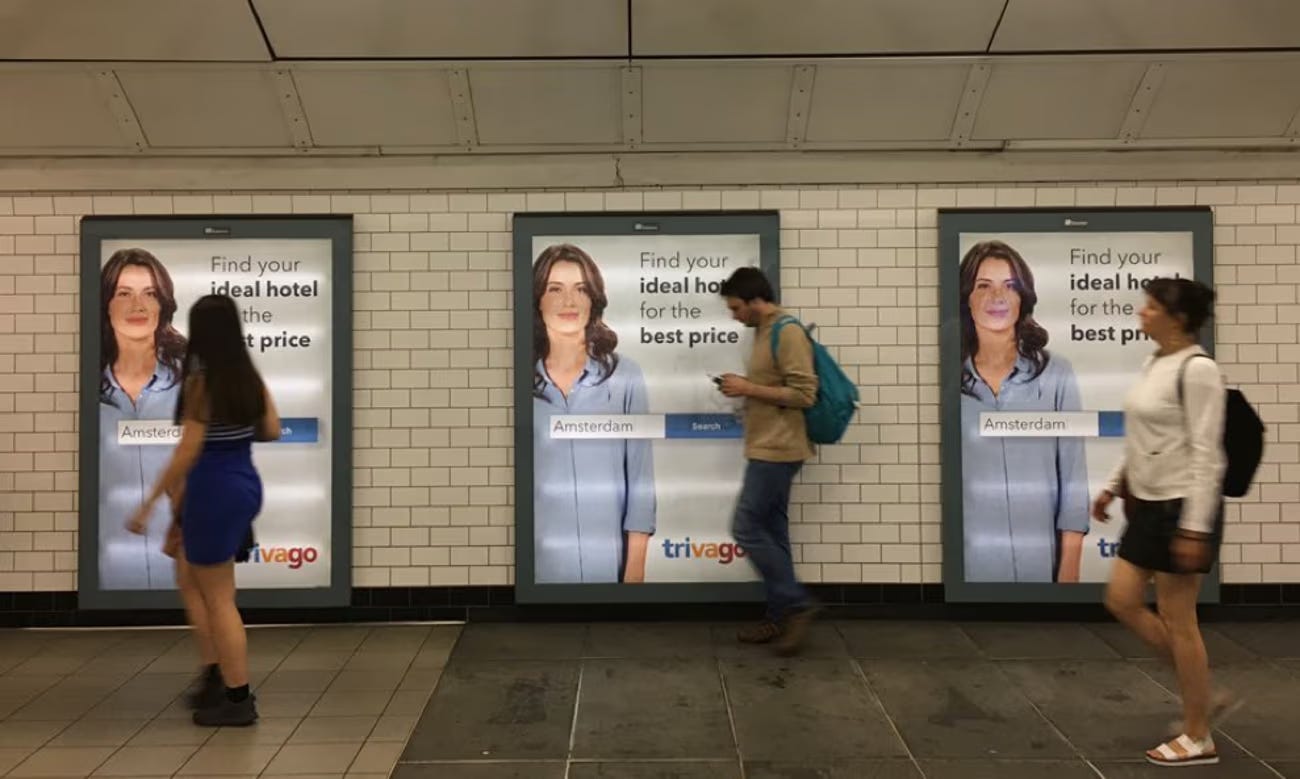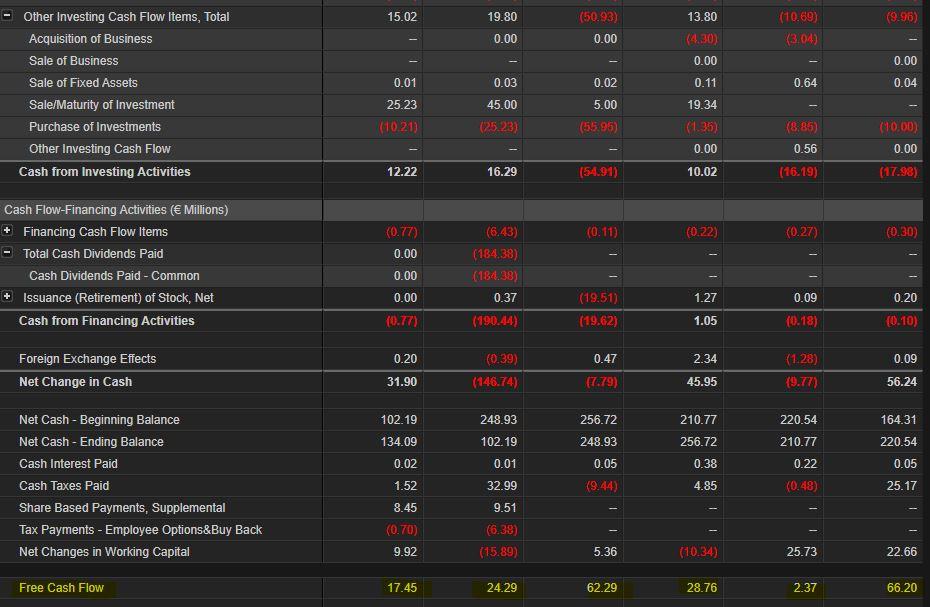A world-famous brand priced below its cash-value
This is a story about how the most profitable mispricing's sometimes occur.
I was recently at a dinner with my brother and a group of friends.
He was telling a story that had the entire table glued to their seats.
He had been introduced to someone called Jo.
Jo, apparently, worked for Liverpool FC, and was responsible for all their travel arrangements.
It was her job to book flights and hotels whenever the team had to traverse the globe, playing matches or touring.
Of course, she had access to highly preferential rates for flights and hotels, due to the sheer volumes she was booking.
Jo discovered a loop-hole in the system.
She could book a flight or hotel using her business account but her own payment card, and then switch the names of the passengers at the last minute.
She could, we were reliably informed, get you a business class flight to anywhere in the world at a fraction of the normal cost, with a hotel to match.
The only catch was that you wouldn’t get your ticket until the day before the flight, which you had to pay for in advance.
It sounded suspiciously enticing to a bargain-hunting investor like me.
What I really found interesting though, was the reaction of everyone around the table.
As he was explaining how it worked, they were physically squirming in their seats and scrunching up their noses.
I asked what their problem was.
The exact word they used was ‘uncertainty’.
The uncertainty of not having the tickets in their hand. The uncertainty of not having access to those tickets until right before the flight. The uncertainty of never actually meeting Jo in person.
Just, the uncertainty of it all.
Simply listening to the story was making them physically uncomfortable.
Which was fascinating as it wasn’t their money at risk.
As a deep-value investor, I often wondered why everyone doesn’t just buy dirt-cheap stocks and flip them when the price rebounds.
It really is like shooting fish in a barrel (when you hold a group of them).
It makes zero sense, to me, why anyone would risk paying 765x forward-earnings for a tech stock in the hope that it can match the hype in the long-run.
But, that night, around that table, it all made sense.
Most people just can’t handle the type of uncertainty that results in a stock becoming dirt-cheap in the first place.
They much prefer to buy stocks when everything is pointing upwards. And that, perversely, is probably why most ‘normies’ lose money over time.
Which brings me nicely to our case-study.
Trivago (TRVG)
Trivago is a well-known online hotel aggregator.
In the UK, their TV ads are endless and their logo is plastered over the shirts of various premier league teams.
Their brand-marketing campaigns are almost folklore.
For example, in 2017 they ran a campaign which involved posting the exact same ad everywhere in central London.
On the tube, on billboards, on buses, everywhere.
There was debate and outrage from journalists, bloggers and social media users alike.
Some even accused the marketing team behind the campaign of being lazy and incompetent, because the ads were ‘boring’ and ‘repetitive’.
But, it worked.
According to YouGov, Trivago's brand awareness rose 15% in London by the end of the campaign, to 42%.
The debate soon switched to whether or not everyone should be embracing this type of approach.
In fact, in 2025, according to YouGov again, Trivago’s brand is ranked as more well known (in the UK) than Skype, GoDaddy and CNN.
In the US, it’s the third most popular travel brand, behind only Expedia and TripAdvisor, and has been consistently operating in 190 countries since 2005.
Definitely not the type of thing I find very often, down in deep-value land.
Of course, when it showed up during my search, I couldn’t resist taking a closer look.
The valuation I uncovered was staggering:
NCAV ratio = 1.6
TBV ratio = 0.9
EV/FCF ratio = 1.8
P/FCF ratio = 5
It’s been FCF positive since 2017, and when I found it, had an average SH Yield, over the past 5 years, of over 20%.
Most of its assets were cash and short-term investments.
Here was a world-famous, cash-rich, cash-flowing, listed business, selling for the type of valuation typically used on private SME companies.
It was unbelievable.
I started buying shares at around $2.45.
Inevitably, the price continued falling and I continued purchasing as fresh capital became available.
My lowest purchase price was $1.65.
At that price, and after a couple of financial updates, the valuation metrics looked like this:
NCAV ratio = 1.2
TBV ratio = 0.7
EV/FCF ratio = 1.7
P/FCF ratio = 3.8
And, by the way, it was STILL FCF positive, even on a TTM basis.
At one point, the entire business could be purchased for less than the value of its cash.

It was now dirt-cheap.
Obviously, the market never just reprices a business like this for nothing.
There’s always a reason.
Our job is to figure out whether that reason involves irrecoverable decline or a temporary issue.
In the real world, every business has problems. Sometimes big ones.
Anyone that’s owned and operated private businesses (like I have) will tell you that it’s one long succession of problems and fire-fighting.
That’s just the way it is, unless you can invent AI or the I-phone.
The positive side of all this is that ‘business’ is also quite forgiving. You can make a lot of mistakes and still fix everything and carry on.
Only the most severe and extreme issues generally lead to the death of an entire business, overnight.
This means, as a deep-value investor, the odds are generally stacked in your favour, if you can buy cheap enough.
Trivago, for example, has 668 employees (2024).
Imagine the brain power and energy of 668 people, feverishly beavering away to solve a problem or achieve an outcome.
It’s just highly unlikely that this type of effort will completely fail and result in the death of the entire business.
The other benefit of deep-value opportunities is that we’re not looking for future growth or any kind of significant ‘catalyst’.
In simple terms, we just need the market to realise that the business won’t be dying after all.
This was certainly the case with Trivago.
It was trading below its liquidation value, which implied that its future earnings were worthless.
Zero.
Nothing.
So, either the company was about to die or the market had mispriced the situation.
The investment case
As always, I consider my situation if I purchased the entire business.
How much would I pay, and what would I get in return?
Most importantly, how quickly would I get my money back from the business and what things are most likely to stop that from happening?
As you’d expect, there were a few things going on with Trivago.
Firstly, there were the ‘big picture’ issues.
Interest rates were higher, and travel demand was fluctuating. The market was uncertain about how these things would resolve themselves.
But, then, there were the company-specific issues.
Google had changed its advertising formats, which reduced Trivago’s traffic in key markets. It was also now directly competing with some of Trivago’s products and services.
Sadly, for Trivago, Google represented a significant source of all traffic and customers.
The uncertainty was palpable in the price action. The price continued to fall, as the 2024 financial updates were released.
Those figures showed the result of all these issues.
Revenue was down (9%) and adjusted EBITA was just 20% of its normal level.
TTM FCF dropped from a 5Y average of 25mn to just 6mn during the year. FY24 was just under 18mn overall.
For context, 2023 FCF was at 24mn and 2022 FCF was at 62mn.
None of this is ideal, but it was far from terminal decline, to a rational business owner.
But, that’s exactly how the market was pricing it.
Of course, the company decided to take action, and do what they do best.
Brand marketing.
They were also building an AI component to make their platform even more engaging and user-friendly, while reducing their Google-reliance.
This would, they said, result in higher short-term costs (+7% YoY) but increase long-term value for the business.
What would the economy do over the next couple of years?
Would Trivago’s efforts revitalise revenue and profits?
Could the business ever generate growth again?
The market faced this uncertainty with the same discomfort I witnessed around that dinner table.
The market was scrunching up its nose and squirming in its seat.
It sold the stock indiscriminately, rather than experience another moment of discomfort.
Of course, to a rational businessperson this became an absurd valuation.
The overwhelming likelihood was that the business would overcome these issues one way or another.
It was certainly a long way from dying.
So, what happened?
The outcome
In early February 2025, the company released its financial results for Q4 24 and updated its forward guidance.
It had taken roughly 18 months, but Trivago finally turned things around.
Revenues were up 3%.
Net-income was up 104%.
EBITA was up 52%.
Double-digit revenue growth for January 2025 was already happening and forecasted to continue for FY25.
Their new brand marketing campaign was off to a flying start. It involved a partnership with Jurgen Klopp (the famous football coach).
It was active and expanding in all key markets, and utilised AI to make it fully multilingual.
Suddenly, everything was pointing upwards again and the market felt safe getting back into the stock.
No more scrunched noses or squirming, just excited investors with feverish FOMO.
By that point, the share price more than doubled and we had exited our position for an average profit of 75%, in just over a year.
Trivago was one of my all time favourite deep-value flips.
Firstly, because it was such a large, well known brand. This gave me an increased conviction that the business probably wasn’t going to die.
But secondly, because the stock-price sell-off was so obviously about uncertainty, rather than terminal decline.
These set-ups are the true gems that make us the best returns, the quickest.
Disclaimer: I owned shares in Trivago and had sold all of them by the time this article was published. I may or may not buy more in future.







Congrats on this name, some great work done!